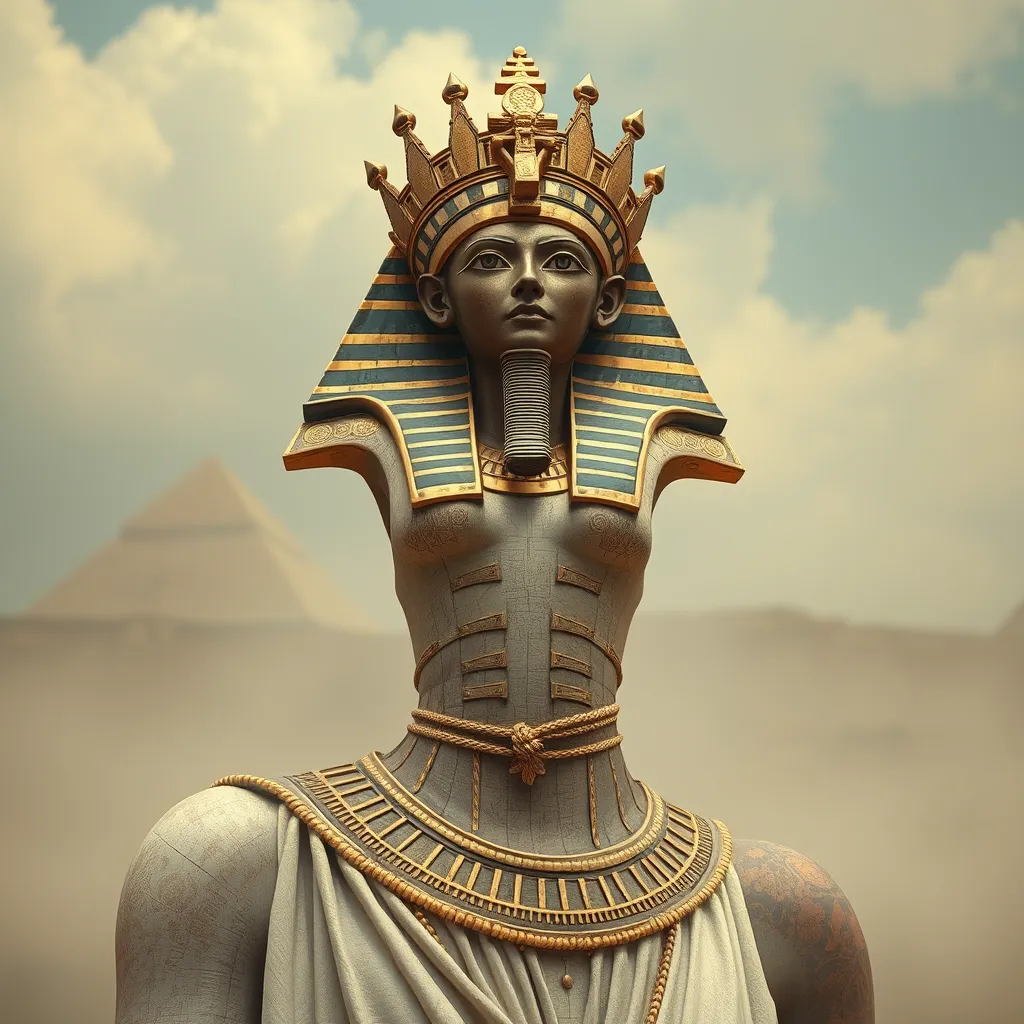The Queen’s Ascent: The Rise of Women to Power in Ancient Egypt
I. Introduction
Throughout history, women have played a pivotal role in shaping societies, though often their contributions have been overlooked or minimized. In Ancient Egypt, however, women held significant positions of power and influence, particularly in the context of queenship. This article explores the multifaceted roles of women in Ancient Egyptian society, highlighting the queens who rose to prominence and their impact on both their civilization and subsequent historical narratives.
Queenship was not merely a ceremonial role; it was deeply intertwined with the political, religious, and social fabric of Ancient Egypt. The purpose of this article is to delve into the historical context of women’s roles, the prominent queens that exemplified this ascent, and the cultural mechanisms that supported their power.
II. Historical Context of Women in Ancient Egypt
The status of women in Ancient Egypt was relatively advanced compared to other ancient civilizations. Women could own property, initiate divorce, and were often regarded as equals to men in legal matters. Gender roles were not strictly defined, allowing women to engage in various aspects of life, from domestic duties to public affairs.
Key cultural beliefs underscored femininity and power, embodying the idea that women could be both nurturing and powerful. This duality was celebrated rather than diminished, standing in contrast to other ancient cultures where women were often relegated to subordinate roles. For instance, in Ancient Greece, women were largely confined to the domestic sphere, while in Ancient Egypt, they actively participated in religious and political life.
III. Prominent Queens of Ancient Egypt
A. Hatshepsut: The Female Pharaoh
One of the most remarkable figures in Ancient Egyptian history is Hatshepsut, who ruled as a pharaoh during the 18th Dynasty. Taking power after the death of her husband, Hatshepsut initially served as regent for her stepson, Thutmose III. However, she soon proclaimed herself pharaoh, donning male regalia and adopting the traditional titles of kingship.
Her reign, which lasted approximately 22 years, was marked by extensive building projects, including her magnificent mortuary temple at Deir el-Bahari, and a successful trade expedition to Punt that greatly enriched Egypt.
Despite facing challenges, including resistance from traditionalists and her stepson, Hatshepsut used strategic political alliances and her keen understanding of governance to solidify her power. Her story illustrates the complexities of female leadership in a patriarchal society.
B. Cleopatra VII: The Last Pharaoh
Cleopatra VII, the last active ruler of the Ptolemaic Kingdom of Egypt, is perhaps the most famous queen in history. Her reign was characterized by political acumen and a deep understanding of diplomacy, especially in her relationships with powerful Roman leaders such as Julius Caesar and Mark Antony.
Through these alliances, Cleopatra sought to protect Egypt from the growing power of Rome and to restore the glory of her dynasty. Her legacy is a blend of political savvy and cultural richness, as she was a patron of the arts and a scholar in her own right.
Cleopatra’s impact on history is profound, as she symbolizes the intersection of femininity and power, and her life story continues to captivate historians and the public alike.
IV. The Role of Goddesses in Empowering Women
Religion played a crucial role in elevating the status of women in Ancient Egypt, with goddesses such as Isis, Hathor, and Ma’at embodying ideals of power, motherhood, and justice.
A. Major goddesses and their significance
- Isis: Known as the goddess of motherhood and magic, Isis was revered as a protector of the pharaoh and the nation.
- Hathor: The goddess of love, beauty, and music, Hathor was often associated with joy and motherhood, symbolizing the nurturing aspect of femininity.
- Ma’at: Representing truth and order, Ma’at was crucial in the maintenance of cosmic balance and justice, reflecting the power women could wield in society.
The influence of these deities extended to the roles women undertook as priestesses, where they were integral to religious ceremonies and temple management, further empowering them in a male-dominated society.
V. Marriage, Family, and Power Dynamics
Marriage was a fundamental institution in Ancient Egyptian society, particularly among the elite. Royal marriages were often strategic, designed to strengthen alliances and consolidate power.
Royal consorts and mothers played vital roles in political affairs, often acting as regents or advisors. For example, the role of the queen-mother could be significant in ensuring the legitimacy and stability of a young pharaoh’s reign.
VI. Economic and Political Structures Supporting Women’s Power
Women in Ancient Egypt could own land and engage in business, a privilege that allowed them to accumulate wealth and influence. This economic independence was critical in supporting their social and political status.
Women often held administrative roles in the temple economy and other sectors, influencing economic decisions and holding power in their own right. Trade, both domestic and international, further enhanced the status of women, allowing them to engage in economic activities that expanded their influence.
VII. Challenges and Limitations Faced by Women
Despite their prominent roles, women in Ancient Egypt faced societal expectations and restrictions. The ideal of femininity often emphasized domesticity, which could limit opportunities for political engagement for many women.
Internal conflicts and rivalries among royal women could also pose challenges. The struggles for power within the royal family sometimes led to violence and political instability, impacting the queens’ ability to maintain their influence.
Moreover, many powerful women have been historically erased or minimized in records, their achievements overshadowed by their male counterparts, complicating our understanding of their legacies.
VIII. Conclusion
In summary, the history of women in Ancient Egypt, particularly queens, illustrates a complex tapestry of power, cultural beliefs, and societal structures. Figures like Hatshepsut and Cleopatra not only navigated the challenges of their time but also left indelible marks on history.
The enduring legacy of Ancient Egyptian queens sheds light on the intricate relationship between gender and power throughout history. Understanding these dynamics offers valuable insights into the ongoing conversation about gender and leadership in contemporary society.




